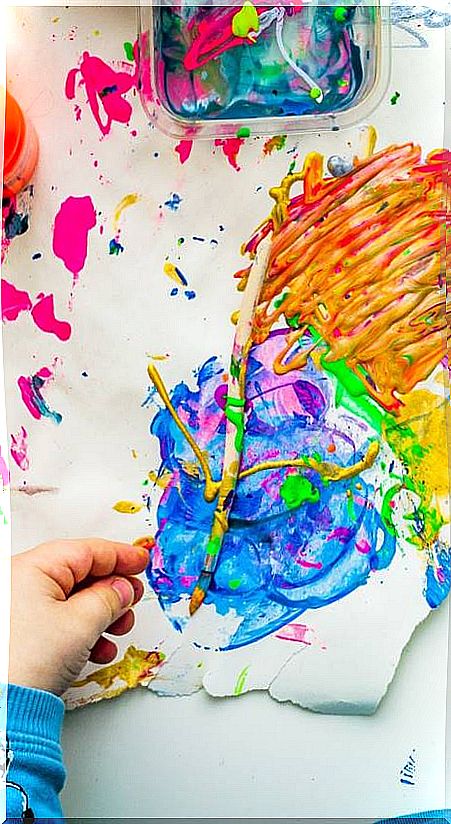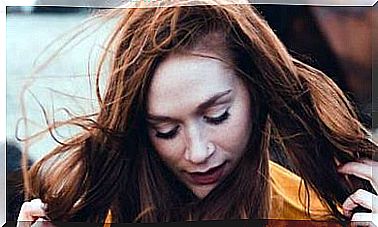What Children’s Drawings Reflect
All children draw and only after a certain age can the concern about “not doing it well” discourage them. Parents should encourage them in this work, which contributes significantly to their development.

All children draw spontaneously since they can hold a pencil or a color and, although not all have the same abilities, it is important to promote and motivate this playful activity that, in addition to being the basis for other learning, becomes a language through which children also express themselves.
Child psychologists and also some doctors know the richness of these productions and use and understand them as a medium where the child projects his personality, his fantasy, his fears and all his emotions.
Throughout this article we will offer a series of clues to facilitate understanding of the drawings, not so much with the intention that parents interpret their children’s drawings as so that they can get to know them a little more and get closer to their richness in another way. inside world.
Learning to draw: a multi-stage path
Drawing requires, in addition to natural dexterity, some learning but serves, in turn, as the necessary basis for other learning. Thus, just as a certain mastery and maturation of motor skills is required to start drawing, the exercise of drawing itself stimulates and enhances fine motor skills.
Fine motor skills, which are developed with drawing, are the basis for starting to write, cut, etc.
Obviously, not all children have the same ability to draw : some do it more fluently and that can make some people, by comparison, back down and say that they do not want to draw or that they do not know.
That is why it is important that adults encourage and favor drawing as an activity that produces fun and entertainment, without entering into judging or evaluating its quality.
It is important that adults encourage drawing, without judging or evaluating its quality.
At the same time, we must bear in mind that all children tend to go through the same stages in terms of drawing evolution. Let’s see them:
- A from 18 months about small holding their first steps graphics. They are the well-known scribbles, traces that are the result of motor skills without any kind of figurative intention or resemblance to reality, although they can identify them as “a ball, a house, a mother.” These first sketches facilitate coordination of sight with movement.
- Between 2 and 3 years they try to carry out a representation of what they see in their environment: houses, people, mountains, trees, cars … and they try to reproduce it as faithfully as possible. As they are not very critical of themselves, for them it is almost an exact copy.
- From the age of 3, children can already express what they want to draw before doing it, thus showing that thinking precedes the drawing itself. The scribble is abandoned to move to a more schematic stage and with more interest in reproducing reality. Little by little we will see that the interesting thing about the drawing is that it gives them the opportunity to tell stories about it. It no longer happens as before – “this is a house” -, but as they grow what is important, for them, is the adventure that they will create from that house. The human body is one of the favorite subjects because now they are building the idea of their body image and they are reaffirming it through graphics.
- At 5 and 6 years the drawings are still very simple but more and more elements are represented on the sheet.
- After the age of 8, the theme is broadened and the drawings not only express reality but also their fantasy and can become a true cartoon film, starting with an imaginary character to whom things that the child represents are happening: struggles, attacks, mutations … and ending with the page full of characters and stories. At this stage, children are more self-critical and many begin to want to stop drawing because they consider themselves unskilled.
Encourage creativity by encouraging them to draw
It is very important to encourage the creativity of children in all their areas: plastic, written, verbal and also drawing. The creative child is more open, has better communication skills, integrates better in all environments and ends up having a good level of self-esteem.
It is therefore advisable for parents to stimulate the creativity of their children. It is not about fantasizing that you are giving out a genius, but about helping them to express themselves more freely. To encourage children to continue drawing it is necessary:
- Motivate them by offering them the right material for their age: crayons, finger paints, colors, large papers, blackboards … In short, anything and any place that encourages them to draw or paint at any given moment.
- Be attentive to their interpretations. If for them that is an airplane, even if it looks like a submarine, we must let them create and express their opinions freely.
- Forget about comparisons, since each child has his personal evolution, his abilities and his favorite drawing subjects.
- Reinforce your production through our comments and praise, framing your drawings to hang them somewhere in the house or using them as a greeting or business card.
- Avoid criticism of coloring, themes, shapes, distribution of elements, etc., since all these factors are like this because they express the internal world of the child. If we want to get closer to that world we must respect its expression
Psychodiagnosis through drawing
Child psychologists use drawing as a diagnostic tool based on the idea that through drawing the child projects a good part of his internal world.
The most used tests are the Family Test and the so-called HTP. The child is asked to paint his family and the hierarchy of the different members and his relationship with each of them is analyzed.
In the HTP (House, Tree, Person) test, the house would reflect the child’s vision of domestic life and family relationships; Through the tree the most unconscious image he has of himself, as well as of his internal conflicts, is shown; the person would express how the child sees himself and how he relates to the outside.
Warning signs in children’s drawings
Young children are very transparent and express how they feel in many of their actions. It is not convenient to interpret or psychologize their creations by system, but to know what problems can be reflected in them.
When certain elements appear regularly in a child’s drawings, we can think that this child may be having a bad emotional moment and even consider that he or she has a psychological problem. The most important elements to consider are:
Inhibition or insecurity:
- Excessively small drawings.
- Tendency to draw pictures in a corner of the page.
- Use of a very soft and even weak line.
- Very poor and not very varied content.
- Frequent use of the eraser.
Sadness or depression:
- Very schematic drawings with few details.
- Little color or repeated predominance of black.
- Many empty spaces between the different elements.
- Apathy when starting or difficulty finishing the drawing.
Tension and anxiety:
- Continuous drawing of monsters or terrifying characters.
- Frequent appearance of aggressive objects: pistols, swords, bombs …
- Tendency to always shade the different elements of the drawing.
- Prefer strikethrough to erasure when rectifying.
If we observe a continuous tendency to use the elements described and there are other signs that may reaffirm the impression that there may be a problem (general reluctance, sadness, permanent anger, rebellion, difficulties at bedtime …), it is advisable to speak in the first place with the tutor to share the concern and contrast the state of the child in class.
If from all this it is deduced that the child is having a hard time, a child psychologist can be consulted who will give the necessary guidance.
What do the drawings reflect?
Without the intention of becoming psychologists for our children, it does not hurt to have some help that allows us to understand their drawings a little more.
The color of the drawings
The color of a drawing projects the mood and personality. In the era of doodles, the use of color is indistinct and responds to its appeal; Later it will make sense, although it can only be attributed if certain colors are used repeatedly and exclusively.
Each color usually expresses a state of mind :
- Amarillo. Express joy, disinhibition and happiness; It is usually used by intelligent children and in good spirits.
- Brown. It shows the most sensitive side and is used by children with some insecurity.
- Red. It is the favorite of children with a lot of energy and vital force and who tend to be very impulsive; excessive use of red could indicate hostility and aggressiveness.
- Green. It usually expresses calm and self-esteem. If it is abused or applied to elements that do not correspond, it speaks of children who tolerate frustration poorly and persistently wish to attract attention.
- Blue. It is the expression of a calm and stable personality, and of emotional peace. It is usually used by calm and orderly children who are well with themselves and their environment.
- Black. If used too frequently, it can show both a sad and depressed child and a violent child with much contained anger and rebellion.
The arrangement of the elements
The way in which children distribute the different elements that make up the set of a drawing on paper also responds to emotional indicators, so it is convenient to be attentive to this distribution.
- A well-centered drawing usually shows an organized and confident child, while an off-center drawing could indicate greater immaturity, insecurity, and dependency.
- If the drawing tends to be on the right side, it is possible to think of a child with good stability and emotional control, although also with a certain tendency to introversion.
- The left side, on the other hand, is preferred by children who are more open, but with greater impulsiveness and less tolerance for frustration.
- The upper part of the paper corresponds to the fantasy. A drawing predominantly located in that area can be the work of a very fanciful child who could have problems with his environment, so he tends to escape.
- The lower part denotes contact with reality and is used by children who have few problems and are good with their environment; Although if the drawing seems to come off the sheet from below and nothing appears in the center or above, it could be very insecure children, with low self-esteem and problems with relationships with others.
The size of the drawings
The size of a drawing, in the first place, is related to age and usually takes the appropriate proportionality as the child grows and matures psychologically. In any case, the size allows us to understand above all the level of self-esteem, acceptance and social relationship.
- The very small drawings can translate feelings of inferiority and usually correspond to withdrawn, insecure and shy children; While excessively large drawings would speak of children who are more open but at the same time with little social acceptance, tending to exceed limits and norms.
- It should also be borne in mind that children tend to express the importance of the different elements of the drawing through their size. In this way, the significant characters or objects will always be larger than those that are less important and appear smaller.
In addition to what we have described about the creative and expressive facet of children’s personalities, we must not forget that drawing also plays a very important role in their learning process, mainly in what has to do with writing.
Thus, at the same time that they draw, children learn to master the line, to control the limits of space through coloring and to regulate the pressure they exert on the sheet. To all these practical elements that will be of great interest when starting to write, we must add the influence of drawing on visual and psychomotor maturation and coordination, as well as on spatial organization.









